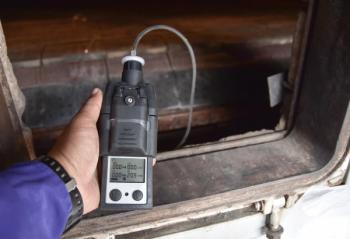
The Frontier of Spectroscopy: 10 Unsolved Questions
Key Takeaways
- NIR spectroscopy is crucial for addressing particle size effects and matrix interactions, while MIR/IR and Raman provide molecular specificity.
- UV-vis spectroscopy aids in calibration transfer and baseline correction, with broad applications in atomic and molecular analyses.
Here are ten main unsolved problems in vibrational and atomic spectroscopy, each accompanied by a tutorial-style synopsis suitable for advanced practitioners or graduate-level students. Each of these tutorials, spanning advanced spectroscopy modeling, chemometrics, machine learning (ML) interpretability, and standardization, consists of a descriptive article. Each piece is well-referenced (with detailed matrix equations, radiative transfer models, chemometric derivations, and so forth), and includes the following. • Special focus on each topic—including mathematical derivations in matrix notation. • Conservative, verifiable content anchored to established reference sources. • Appropriate tutorial article structure: Title, Summary, Abstract, Introduction, Theory with equations, Examples, Discussion & Future Research, and References.
Spectroscopy Techniques Covered
The ten tutorial topics outlined encompass a wide range of challenges and innovations in modern spectroscopy and chemometrics, each with relevance to multiple spectroscopic techniques. Near-Infrared (NIR) spectroscopy is especially prominent across topics such as diffuse reflectance modeling, baseline and scatter correction, and sample heterogeneity due to its sensitivity to particle size effects, matrix interactions, and physical sample characteristics. Mid-infrared (MIR/IR) and Raman spectroscopy are frequently involved in net analyte signal analysis, nonlinear calibration challenges, and multimodal data fusion because of their molecular specificity and rich vibrational information. Ultraviolet-visible (UV-vis) spectroscopy contributes primarily to calibration transfer and baseline correction studies due to its broad application in both atomic and molecular analyses. X-ray fluorescence (XRF) and inductively coupled plasma (ICP) spectroscopies, both optical emission (OES) and mass spectrometry (MS), are applicable when fusing atomic and vibrational spectroscopies for comprehensive analyte characterization. Hyperspectral imaging (spanning visible to NIR and SWIR) becomes particularly useful in handling spatial heterogeneity, applying net analyte signal (NAS) across spatial dimensions, and improving interpretability through visual chemometrics. Additionally, fluorescence spectroscopy and laser-induced breakdown spectroscopy (LIBS) are relevant to specific domains in data fusion and nonlinear modeling due to their nonlinear emission behaviors. In modeling and correction topics, such as calibration transfer, sample heterogeneity, and uncertainty estimation, all of these spectroscopies benefit from multivariate statistical approaches. As such, nearly all vibrational (IR, NIR, Raman), electronic (UV-vis), and atomic spectroscopies (XRF, ICP, LIBS) are applicable, with the most widespread being NIR and MIR/IR due to their strong interaction with matrix-dependent and physical sample properties that necessitate advanced chemometric solutions.
1. Modeling Diffuse Reflectance from Complex Particulate Samples
This tutorial explores the ongoing challenge of constructing a mathematically exact model that predicts diffuse reflectance from powders and granular materials with varying particle size distributions and optical properties. It will review radiative transfer theory, Kubelka-Munk, and Hapke models, then highlight their limitations in predicting spectra across real-world samples. Emphasis will be placed on hybrid computational approaches (Monte Carlo, finite element, and machine learning models) and how these might offer future solutions (1).
2. Quantifying Net Analyte Signal in Multivariate Spectroscopy
This article addresses the challenge of ensuring analyte specificity in multivariate calibration using full-spectrum vibrational or atomic data. Participants will examine the mathematical definition of the net analyte signal (NAS), its dependence on spectral overlap, and the limitations of current chemometric models like PLS and PCR. Novel approaches using orthogonal subspace projections and sparse modeling to enhance interpretability and specificity will also be discussed (2).
3. Real-Time Calibration Transfer Across Instruments and Platforms
Inter-instrument variability remains a major barrier to deploying spectroscopic models. This tutorial delves into the sources of spectral variability, including resolution, line shape, and wavelength alignment. Participants will explore standardization techniques (direct standardization, piecewise direct standardization, and external parameter orthogonalization and current limitations in achieving robust, physics-informed model transfer across diverse hardware platforms (3).
4. Modeling and Correcting Sample Heterogeneity in Spectral Analysis
This tutorial investigates the persistent issue of sample heterogeneity—chemical and physical—during spectroscopic analysis. Focus will be placed on understanding how spatial variation, surface texture, and particle interactions influence spectral features. Imaging spectroscopy, localized sampling strategies, and adaptive averaging algorithms will be reviewed as tools to manage this problem (4).
5. True Uncertainty Estimation in Multivariate Calibration
Uncertainty quantification in multivariate calibrations is not yet resolved at a foundational level. This session will compare classical statistical error propagation with Bayesian and resampling-based approaches (bootstrapping, jackknifing). It will highlight limitations in confidence interval estimation for model coefficients and predictions in real-world, collinear datasets (5).
6. Interpretability of Machine Learning Models in Spectroscopy
As machine learning penetrates spectroscopy, the lack of interpretability of deep models becomes a major limitation. This tutorial introduces explainable AI (XAI) techniques—SHAP, LIME, saliency maps—and evaluates their effectiveness in identifying chemically meaningful spectral features. It discusses the trade-off between model complexity and transparency (6).
7. Multimodal Fusion of Vibrational and Atomic Spectroscopic Data
Combining Raman, IR, NIR, UV-vis, and atomic spectra to enhance analytical power remains an open challenge. This session examines early, intermediate, and late fusion strategies for spectroscopic data. Emphasis is placed on resolving alignment, scaling, and redundancy problems, and on strategies for coherent physical interpretation (7).
8. Detecting and Correcting Nonlinearities in Spectral Calibration Models
Many vibrational and atomic systems exhibit nonlinear relationships due to concentration-dependent absorption, matrix interactions, or instrumental artifacts. This tutorial explores methods to detect and model nonlinear behavior, including kernel PLS, Gaussian processes, and neural networks. Emphasis is placed on understanding when such models are justified and how to validate them (8).
9. Establishing Universal Spectral Libraries and Transferable Metadata Standards
Despite numerous databases, the lack of standardization in metadata, formatting, and annotations limits utility across laboratories and applications. This tutorial explores efforts by IUPAC, NIST, and commercial providers to establish common vocabularies, traceable references, and open formats (JCAMP-DX, ANDI). Participants will learn best practices in creating and sharing reproducible spectral libraries (9).
10. Accurate Baseline and Multiplicative Scatter Correction for Complex Matrices
Baseline drift and multiplicative scatter distort quantitative and qualitative analyses, particularly in near-infrared and Raman spectroscopy. This tutorial will cover traditional spectral corrections (multiplicative scatter correction [MSC], standard normal variate [SNV], and extended multiplicative scatter correction [EMSC]) and assumptions, while introducing advanced techniques like wavelet-based correction, asymmetric least squares, and data-driven scatter modeling. Attention will be paid to implications on model bias and overfitting (10).
References
(1) Workman, J., Jr. Toward a Generalizable Model of Diffuse Reflectance in Particulate Systems. Spectroscopy Online, 2025, June 30. DOI:
(2) Workman, J., Jr. Specificity and the Net Analyte Signal in Full-Spectrum Analysis. Spectroscopy Online, 2025, July 21. DOI:
(3) Workman, J., Jr. Universal Calibration: Can Models Travel Successfully Across Instruments? Spectroscopy Online, 2025, August 11. DOI:
(4) Workman, J., Jr. Mastering Spectroscopy of Inhomogeneous Materials: Advanced Sampling Strategies to Solve the Heterogeneity Problem. Spectroscopy Online, 2025, August 19. DOI:
(5) Workman, J., Jr. Error Bars in Chemometrics: What Do They Really Mean? Spectroscopy Online, 2025, August 25. DOI:
(6) Workman, J., Jr. Demystifying the Black Box: Making Machine Learning Models Explainable in Spectroscopy. Spectroscopy Online, 2025, September 8.
(7) Workman, J., Jr. Data Fusion in Action: Integrating Different Vibrational and Atomic Spectroscopy Data. Spectroscopy Online, 2025, September 16.
(8) Workman, J., Jr. Beyond Linearity: Identifying and Managing Nonlinear Effects in Spectroscopic Data. Spectroscopy Online, 2025, September 24.
(9) Workman, J., Jr. The Quest for Universal Spectral Libraries: Standards, Metadata, and Machine Readability. Spectroscopy Online, 2025, October 6.
(10) Workman, J., Jr. Accurate Baseline and Multiplicative Scatter Correction for Complex Matrices. Spectroscopy Online, 2025, October 13.
Newsletter
Get essential updates on the latest spectroscopy technologies, regulatory standards, and best practices—subscribe today to Spectroscopy.





